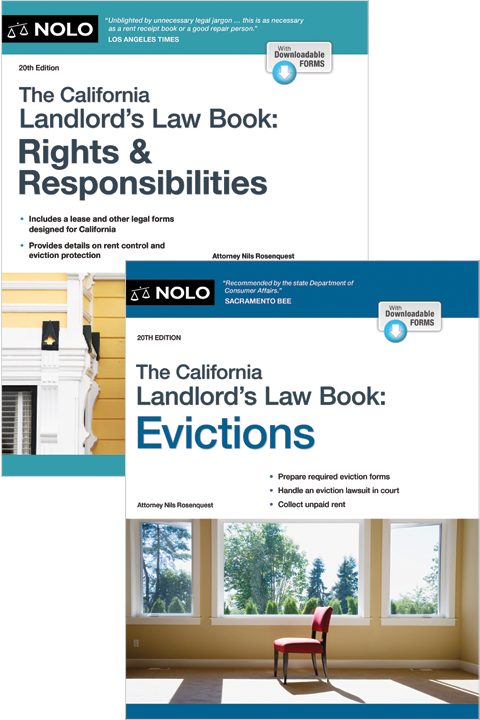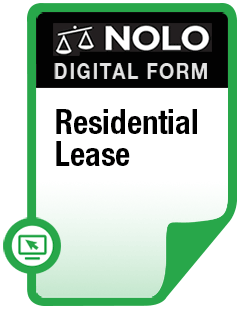Find out what it takes to hold a landlord legally responsible for a tenant's dog bite.
One of the reasons landlords are reluctant to rent to tenants with dogs is fear that if a dog injures someone, both the landlord and the dog's owner might end up paying.
When Are Landlords Liable for Tenants' Dogs' Behavior?
It's very rare for a landlord to be found liable for injuries inflicted by a tenant's dog. Simply leasing premises to a tenant with a dog isn't enough, by itself, to create liability. For example, if a tenant's apparently friendly dog bites someone, the landlord isn't liable for the injury.[1], [2]
In many states, anyone trying to hold a landlord liable for a tenant's dog must prove that the landlord:
- knew the dog was dangerous, and
- had the legal power to make the tenant get rid of the dog or move out.
As one court put it, a property owner cannot "sit idly by in the face of the known danger to others."[3]
These factors might also determine whether a homeowners' association is liable for incidents in common areas.[4]
But not every state follows this rule. Under some laws, landlords aren't liable even when they know a tenant's dog is likely to hurt someone. For instance, a Montana rancher knew his foreman's dog had bitten someone, yet when the dog later bit a meter-reader, the rancher wasn't held liable—unless he'd exercised control over the animal.[5]
If a landlord is found financially liable, the landlord's liability insurance might cover the loss.
Landlord Must Have Actual Knowledge That a Dog Is Dangerous
To be held liable, a landlord must actually know the dog poses a danger—meaning the landlord must know the dog has already threatened or injured someone.
For example, a landlord who knows only that a tenant's dog is chained and barks at people probably won't be held liable if the dog bites someone.[6]
If the dog is particularly threatening, however, that can be enough evidence of a dangerous tendency. A Colorado landlord who fostered two dogs before signing a lease—despite those dogs threatening his grandchild—was later found liable when the dogs severely injured another child.[7] A New York court reached a similar result in another case.[8]
A landlord who ignores overwhelming evidence of danger does so at their peril. In Alaska, after a six-year-old was mauled by two neighbor dogs, a jury awarded both compensatory and punitive damages against the mobile home park for its "blatant disregard" of tenant safety.[9]
On the other hand, Ohio landlords who knew a tenant's dog had bitten one child but reasonably believed it had been destroyed were found not liable when it later bit another child.[10] Whether that protection would extend to other landlords is doubtful, as most jurisdictions hold landlords liable once they know of the danger.
Landlord Must Have Some Control Over the Dog
It wouldn't be fair to hold a landlord responsible for a dog they can't control or have removed. For example, a landlord who purchases a building already under a fixed one-year lease with a dangerous dog often can't force the tenant to remove the animal. But when the tenancy can be terminated on short notice, the landlord who does nothing after learning the dog is dangerous might be liable.
In North Carolina, a lease giving the landlord the right to demand dog removal within 48 hours if the animals were deemed nuisances was held to give the landlord sufficient control—making him liable when rottweilers attacked a visitor.[11]
Even if eviction isn't chosen, landlords can reduce risk by fencing yards, requiring tenants to keep dogs indoors, or posting warning signs.
Dogs in Common Areas
A landlord might be liable for injuries caused by a tenant's dog in a common area if the landlord has control over the area and didn't use reasonable care to reign in dangerous dogs.[12] But, if a dog attacks someone entirely within the tenant's leased property—not in a common area—it's less likely that a landlord will be held responsible for the injury.[13]
Injuries Off the Landlord's Property
A landlord might be liable for injuries caused by a tenant's dog off the rental property if the landlord knew the dog posed an unreasonable risk and allowed it to roam.[14] A California court held similarly: if a dog escapes due to defects in the landlord's property, the landlord can be liable for off-site injuries.[15] Some courts, however, have ruled there is no duty to prevent off-premises harm by a tenant's dog.[16]
Harboring a Tenant's Dog
Someone who "keeps" or "harbors" a dog—that is, exercises care or control over it—is treated like the dog's owner for liability. Landlords who do more than merely rent to a tenant with a dog may be deemed keepers.
Here are examples where landlords weren't held liable because they didn't harbor the dog or exercise control:
- A landlord whose off-site manager allowed a tenant to fence the building's backyard and keep a dog there was not liable when it bit a child—because the landlord exercised no "care, custody or control."[17]
- Connecticut landlords who neither fed nor cared for a tenant's dog, and who prevented it from roaming the yard, were not deemed keepers when it bit a guest.[18]
- A Minnesota mobile home park landlord was not a keeper under the state dog-bite statute because he never tried to control or manage the tenant's dog that attacked a child.[19]
- A Wisconsin landlord was held not to be a keeper or harborer of tenant dogs kept in a wooded area, and thus not liable on negligence principles where the dogs injured someone.[20]
_______________________________________________________________
Footnotes:
1. Stokes v. Lyddy, 75 Conn. App. 252 (2002).
2. Georgianna v. Gizzy, 483 N.Y.S.2d 892, 126 Misc. 2d 766 (1984).
3. Linebaugh v. Hyndman, 516 A.2d 638 (1986), aff'd, 524 A.2d 1255 (1987).
4. Barrwood Homeowners Assoc., Inc. v. Maser, 675 So. 2d 983 (Fla. App. 1996), reh'g denied (1996).
5. Criswell v. Brewer, 741 P.2d 418 (Mont. 1987).
6. Gill v. Welch, 524 N.Y.S.2d 692 (1988).
7. Vigil ex rel. Vigil v. Payne, 725 P.2d 1155 (Colo. App. 1986).
8. Strunk v. Zoltanski, 479 N.Y.S.2d 175, 468 N.E.2d 13 (1984).
9. Alaskan Village v. Smalley ex rel. Smalley, 720 P.2d 945 (1986).
10. Parker v. Sutton, 594 N.E.2d 659 (Ohio App. 1991).
11. Holcomb v. Colonial Associates, LLC, 597 S.E.2d 710 (N.C. 2004).
12. Davies v. GPHC, LLC, 980 N.W.2d 251 (S.D. 2022).
13. Burgi v. E. Winds Ct., Inc., 969 N.W.2d (S.D. 2022).
14. Park v. Hoffard, 847 P.2d 853 (Or. 1993).
15. Donchin v. Guerrero, 41 Cal. Rptr. 2d 192 (Cal. App. 1995).
16. Tran v. Bancroft, 648 So. 2d 314 (Fla. App. 1995).
17. Steinberg v. Petta, 501 N.E.2d 1263 (1986).
18. Buturla v. St. Onge, 519 A.2d 1235 (Conn. 1987).
19. Wojciechowski v. Harer, 496 N.W.2d 844 (Minn. App. 1993).
20. Smaxwell v. Bayard, 682 N.W.2d 923 (2004).
Talk to a Lawyer
Need a lawyer? Start here.
How it Works
- Briefly tell us about your case
- Provide your contact information
- Choose attorneys to contact you
Ready to create a lease?
- Briefly tell us about your case
- Provide your contact information
- Choose attorneys to contact you




